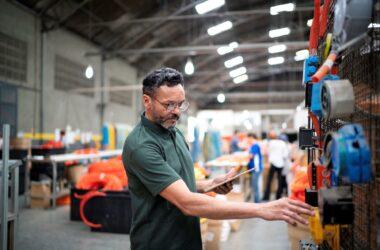Green procurement within construction is undergoing significant development and evolution as sustainability becomes an increasingly prominent consideration in project planning and execution.
From increased emphasis on greener materials, to sourcing processes that promote sustainability, contractors are changing the way they procure to improve the impact the construction cycle has on the environment.
This evolution is not just driven by regulation or client demand—it’s also being shaped by increased access to technology and data.
Digital procurement platforms now allow contractors to prioritise local suppliers, reducing transportation emissions, and to compare materials not just by price, but by environmental certifications and lifecycle impacts.
More contractors are also using carbon tracking tools and ESG reporting features to demonstrate their sustainable procurement choices to stakeholders, frameworks, and clients.
The shift is clear: sustainability is no longer a separate consideration—it’s becoming embedded into every procurement decision, from the moment an enquiry is raised to the materials arriving on site.
A growing focus on sustainable materials
There is a growing emphasis on sourcing sustainable materials. This includes products with lower environmental footprints, such as recycled, reclaimed, or renewable materials. Contractors are actively seeking alternatives to traditional, high-impact materials like concrete and steel, opting instead for eco-friendly options like bamboo, recycled plastic, or engineered wood products.
Using a more local supply chain
Sourcing materials from suppliers that are closer to site helps to reduce the carbon emissions associated with transporting goods and materials to site. An increasing number of contractors are looking towards local suppliers for their projects to lessen the impact their projects have on the environment.
Technological innovation enables green procurement
Technological advancements are enabling contractors to make more informed green procurement decisions. Tools such as building information modelling (BIM), environmental assessment software, and materials databases provide valuable data and insights to support sustainable material selection and procurement planning.
Meanwhile, digital procurement platforms can assist contractors with tasks like choosing a local supply chain and finding suppliers that prioritise sustainable alternatives to traditional products.
Adopting energy efficient solutions for more sustainable sites and buildings
Green procurement now extends beyond materials to encompass energy-efficient solutions for building systems and equipment. Contractors are investing in technologies like energy-efficient HVAC systems, LED lighting, and solar panels to minimise energy consumption and reduce carbon emissions over the lifecycle of a building.
Contractors are looking for certifications and standards
The adoption of green building certifications and standards, such as LEED (Leadership in Energy and Environmental Design) and BREEAM (Building Research Establishment Environmental Assessment Method), is driving demand for sustainable construction practices and materials. Contractors are increasingly seeking materials and products that meet these certification requirements to demonstrate their commitment to sustainability.
Lifecycle assessments provide a complete sustainability picture
Lifecycle assessment (LCA) methodologies are gaining traction as a means of evaluating the environmental impact of construction materials and products across their entire lifecycle, from extraction and production to use and disposal. Contractors are using LCA data to inform their procurement decisions and prioritise materials with lower environmental burdens.
Circular economy principles drive green procurement
The principles of the circular economy, which prioritise resource efficiency, waste reduction, and material reuse, are reshaping procurement practices in the construction industry. Contractors are working with suppliers to assess the environmental credentials of their products, improve transparency in the supply chain, and develop innovative sustainable alternatives.
Policy and regulatory drivers in sustainable procurement
Government policies and regulations aimed at promoting sustainability in the construction sector are driving the adoption of green procurement practices. Contractors are increasingly required to meet sustainability criteria in public sector projects or comply with local building codes that mandate energy efficiency and environmental performance standards.
Green procurement in the construction industry is evolving to include a holistic approach to sustainability, encompassing materials, energy efficiency, certifications, lifecycle considerations, circular economy principles, supplier collaboration, policy drivers, and technological innovation.
As sustainability continues to rise up the agenda, contractors must adapt their procurement practices to align with evolving industry norms and stakeholder expectations for environmentally responsible construction.
Reduce carbon emissions with a local supply chain through The Build Chain
The Build Chain is an online platform for sourcing materials. After submitting your enquiry through the platform, it will be instantly delivered to relevant suppliers within a 30 mile radius of your site postcode. This makes it quick and easy to find local suppliers and reduce the carbon emissions associated with your project.
Related Reading:
How ESG Standards Are Shaping Procurement Strategy Across the Industry
Read the full article:
https://www.thebuildchain.co.uk/news/the-role-of-esg-in-modern-construction-procurement/





